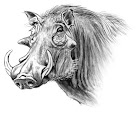So, the other night, Kitten and I were chatting and she
started to spin a yarn about a strange New Year’s custom she’d heard of. It was
interesting, so I wrote it down.
Baeshmunti
Celebration of the Meregits peoples
By G.W.H.
There is a fertile valley in the
foothills of the Mere mountains, deep in the heart of the continent. It is
inhabited by the people known as the Meregits. Although their country has
changed names over the centuries, as borders shift, the people still call
themselves the Meregits.
At the end of the year, in line
with the winter solstice, they have a very special new year’s celebration
called ‘Baeshmunti’. In the late afternoon, each family gathers for a special
feast. If there are people without family, a family will adopt them for the
celebration. It is considered quite an honor for a family to adopt a single
person for their celebration; as this shows their ability to welcome strangers.
The feast is an elaborate affair
featuring a variety of special dishes. Besides several types of roasted root
vegetables, there is roasted young goat stuffed with fragrant herbs, small
river fish are sautéed in the berries of the Jarlow bush, made into a paste,
and served on unleavened bread made from the grains of an ancient breed of
wheat. A simple salad made from the wide, soft leaves of the Jarlow bush, wild
onions and a vinegar made from fermented grain. For dessert, they serve sour
fruit of the Fullallet tree, slathered with wild honey. All of these dishes are
served in large platters made from river turtle shells.
At the end of the feast, and after
everything is cleaned up, the families lie on their sleeping mats and reminisce
about the past year and await sundown.
At sundown, everyone strips naked
and takes up a ceremonial torch made from rushes soaked in animal fat. With lit
torches, they leave their houses and join the rest of the villagers as they
sing ancient songs. The songs tell of the people’s history, with new verses
added every year.
The oldest and wisest woman of the
village leads the walk to the sacred mudflats along the river. If she is too
frail to walk, several young men are there to carry her, for it is a great
honor to do so. No one is left behind, from the oldest man, to the youngest
child.
Once they reach the river, they
discard the burning rushes into small piles. These small piles light up the
riverbank in a soft light. Then, the people cover each other in the soft mud of
the riverbank.
This is the part of the river
where the turtles come in the spring to mate and lay their eggs. The river
turtles, which grow as big a dinner plates, are protected in the springtime, as
the villagers know that overharvesting of the eggs and turtles can lead to dire
shortages in years to come.
The mud signifies the troubles and
tribulations that all suffered during the year. It’s not just one’s own
troubles, but by putting mud on a friend or family member, one shares their
troubles with that person. They in turn, share their troubles with you.
When everyone is sufficiently
covered, special fragment candles made of beeswax are lit. With the soft light
of the candles, the villagers parade back to the village square. Here, they
march around singing the songs of the new year. Songs full of the joys of the
past year, the troubles that they have surmounted and the hopes of an even
better year ahead.
As the candles burn low, they all
march back to the river and wash themselves clean with special fragrant soaps.
This signifies the washing away of their troubles and transgressions from the
fading year. While still wet, they anoint themselves with the fragrant oil
extracted from the flowers and seeds of the Mar Mar tree.
Clean and smelling sweetly, they
disperse back to their homes and sleeping mats for a well deserved sleep.
In the morning, to welcome the new
year, they don new clothes, gather in a circle and exchange handmade gifts. A
special breakfast is served, made from fresh fruits and vegetables. This is to
signify the newness of the coming year. They also dine on a hot porridge made
from ancient grains, dried fruits, fragrant twigs, and crunchy, small animal
bones. This is to signify that all their lives are based on what has come
before and that their life is always built on the past.

